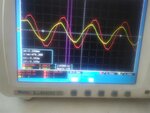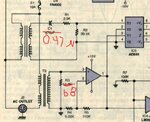shivakumar.r
Member level 1
Hi Friends,
I working on Energy meter design which uses 1:1 transformer for voltage measurement and Current transformer for Current measurement.
While experimenting i found Voltage transformer's output signal lags by approximately 30 Degree with input signal.
Is there a way to remove this phase Lag ?
Some circuit or any SW algorithm to remove it.
Below is the circuit

I working on Energy meter design which uses 1:1 transformer for voltage measurement and Current transformer for Current measurement.
While experimenting i found Voltage transformer's output signal lags by approximately 30 Degree with input signal.
Is there a way to remove this phase Lag ?
Some circuit or any SW algorithm to remove it.
Below is the circuit



